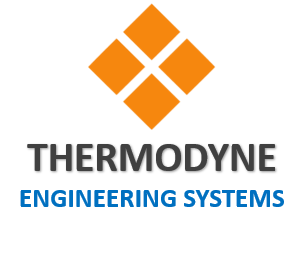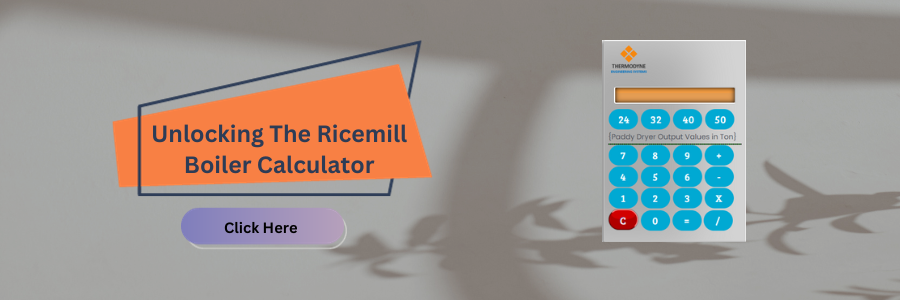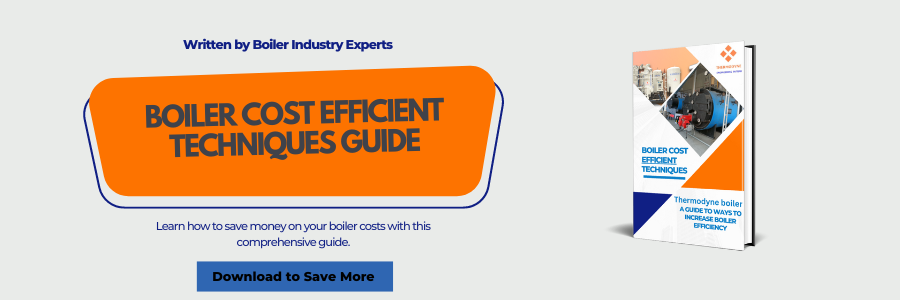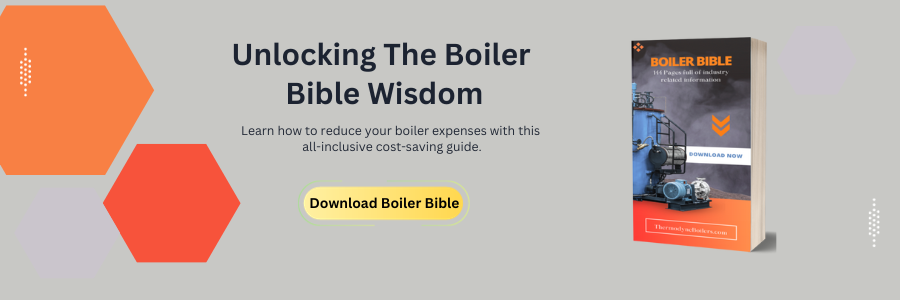Thermodyne is a leading Boiler Manufacturer is committed to providing reliable and high-quality solutions for steam boilers. Think of a steam boiler as a robust steel container that efficiently transforms pressurized water into steam by burning fuel. Functioning as a heat exchanger, it utilizes heat and hot fumes to generate steam and hot water. Our extensive experience in boiler manufacturing ensures optimal performance for heating and various industrial processes. Rely on Boiler Manufacturer for exceptional steam boiler solutions customized to meet your specific industrial needs.
Table of Contents
Regular Boiler Configurations
There are two common types of boilers:
Fire-Tube Boilers
A fire-tube boiler’s principal elements include a cylindrical shell, a set of tubes, a feedwater channel line, and a combustion gas vent stack. The name fire tube is very picturesque. The fire, or hot flue gases from the stove, is led through a group of steel pipes that are enclosed by a shell loaded with water.
Every set of pipes that the flue gas goes through, before making a turn, is deemed a pass. Since, in this example, the gases cross through the case two times before exiting; this boiler is called a two-pass boiler. Due to their effectiveness and reliability, fire-tube, or shell, boilers are fit for steam-intensive industries and continuous or batch process.
The benefits of the fire-tube boiler design include the following:
- Comparatively cheap
- Easy to clean
- Less firm in their water treatment demands
- Compact in size, with simple assembly
- Accessible in sizes from 600,000 BTU/hr to 50,000,000 BTU/hr
- Secure tube replacement
- Well-suited for area heating and manufacturing process applications
The limitations of the fire-tube boiler design involve the following:
- Not fit for high-pressure uses of 250 psig and above
- Limited in their capacity for steam production
- Excessively heavy per pound of steam produced
- Comparatively slow to raise steam stress because of the high volume of water
- Weak to respond quickly to load changes, again, due to the high water volume
Water-Tube Boilers
Water-Tube boiler design is the exact reverse of a fire tube. Here, the water is inside the pipes and the combustion gases move around the outside of the pipes. Water-tube boilers may differ in design; however, their fundamental principles of work are the same. This type of boiler consists of two drums, a set of water tubes, a feedwater channel line, and a combustion gas vent stack.
These pipes are attached to a steam drum and a mud drum. The water is boiled and steam is generated in the upper drum. Water-tube design boilers are quite fit for applications needing large amounts of steam, such as industrial process purposes, and are used less often for heating purposes.
The benefits of the water-tube steam boiler design include the following:
- Accessible in sizes far greater than a fire Internal Furnace Top Feed Husk Fired Boilers: A Sustainable and Efficient Choice-tube boiler design, up to some million pounds per hour of steam
- Ready to manage higher pressures, up to 5,000 psig
- Able to recover faster from load shifts than fire-tube boilers
- Able to give very high temperatures
The limitations of the water-tube boiler design include the following:
- High first capital cost
- A device that makes cleaning more complicated
- No commonality between pipes
- Possible problems from their physical size
Boiler Design Checklist & Primary Steps
It is to perceive that the following measures may not apply to all kinds of boilers and boiler needs some further steps to be followed as per boiler system design. However, the primary steps remain the same for designing as boiler:
- Review Stress in Boiler
Assure that the vent pipe on the boiler is open and review there is no stress in the boiler.
- Check Steam Pause Valve
Verify that the steam pause valve is shut.
- Double Check Fuel Valves
Double-check that all the valves for fuel are free, and let the fuel flow through the system until it gets to the temperature needed by the manufacturer instruction.
- Open Supplies Water Valve
Check and open the supplies water valves to the boiler and load the water inside the boiler drum to just to raise the low water level. This is prepared because it is not possible to start the boiler under the low water level due to a security feature which stops the boiler from starting. Also, the level is not filled much because if overflowed, the water inside the boiler might grow and over pressurize the boiler.
- Automated Starting Mode
Start the boiler in automated mode. The burner fan will begin the purging cycle which will eliminate any gases present in the heater by pushing it out through the funnel.
- Pre-Set purge time
Later the pre-set purge time the pilot burner will light. The pilot lamp consists of two electrodes, through which a huge current is transferred, via the transformer, generating the spark between the electrodes. The pilot burner is outfitted with diesel oil and when the oil moves over, the former ignites.
- Main Burner & Pilot Burner
The main burner which is supplied by dark oil picks fire with the help of pilot burner.
- Inspect the combustion case
Inspect the combustion case from the vision glass to ensure the burner has inflamed and the flame is adequate.
- Check Water Level
Keep a tight eye on the water level as the stress increases and start the feed water when the level of liquid inside the gauge glass is stable.
- Check Flue Valve Operation
Close the flue valve after the steam begins coming outside.
- Remove Steam Stop Valve
Remove the steam stop valve.
- Review Alarms
Once the moving steam pressure is spread, blow down the gauge glass and float chambers to review for the alarms.
Steam Boiler Design FAQ
A boiler is a device that generates steam or hot water by burning fuel. Boilers are used in a variety of applications, including industrial, commercial, and residential heating.
There are many different types of boilers, including fire-tube boilers, water-tube boilers, and packaged boilers. Fire-tube boilers have tubes that carry hot water or steam through a firebox. Water-tube boilers have tubes that carry hot water or steam around a firebox. Packaged boilers are pre-fabricated boilers that are typically used in residential and commercial applications.
The factors to consider when designing a boiler include the type of fuel to be used, the capacity of the boiler, the operating pressure and temperature, and the environmental regulations.
he most common types of fuel used in boilers are natural gas, oil, and coal. Other types of fuel that can be used in boilers include biomass, waste heat, and solar energy.
The type of controls that can be used in boilers depends on the application. Some common types of controls include manual controls, automatic controls, and programmable logic controllers (PLCs).
The type of safety features that can be used in boilers depends on the application. Some common types of safety features include pressure relief valves, water level controls, and flame sensors.
The type of inspections and maintenance that should be performed on boilers depends on the application. Some common types of inspections and maintenance include visual inspections, pressure testing, and cleaning.
The type of codes and standards that apply to boilers depends on the application. Some common codes and standards include the American Society of Mechanical Engineers (ASME) Boiler and Pressure Vessel Code and the National Fire Protection Association (NFPA) 85 Boiler and Pressure Vessel Inspection Code.
The type of environmental regulations that apply to boilers depends on the application. Some common environmental regulations include the Clean Air Act and the Clean Water Act.
The type of hazards associated with boilers depends on the application. Some common hazards associated with boilers include fire, explosion, and burns.




